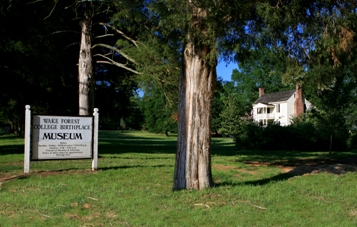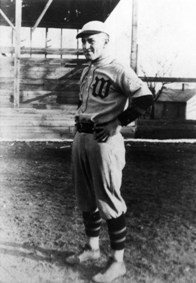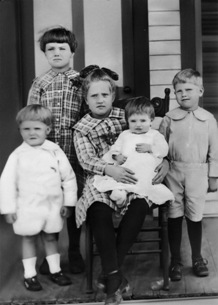 Although it has a much longer history, Wake Forest celebrated its centennial in 2009 because in 1909 the North Carolina General Assembly rechartered it as the Town of Wake Forest and granted permission to sell bonds to build a generator and an electric system.
Although it has a much longer history, Wake Forest celebrated its centennial in 2009 because in 1909 the North Carolina General Assembly rechartered it as the Town of Wake Forest and granted permission to sell bonds to build a generator and an electric system.
The town began in 1832 when the North Carolina Baptist Convention, intent on establishing an educational institute to train future ministers, purchased Dr. Calvin Jones' 615-acre plantation north of the existing community of Forestville for $2,000. Jones described the community as "One of the best neighborhoods in the state, the Forest District containing three schools (one classical) and two well constructed and well filled meeting houses for Baptists and Methodists, and has a lawyer and a doctor. The inhabitants, without I believe a single exception, are sober, moral and thriving in their circumstances, and not a few are educated and intelligent."
Wake Forest Institute opened to young men and boys in February 1834, and 72 students had enrolled by the end of the first year. The institute grew rapidly, and the college trustees hired architect John Berry of Hillsborough. Between 1835 and 1838 Berry designed and built a large classroom building, soon called Wait Hall for the first president, the Rev. Samuel Wait, and two homes for professors, the North Brick House and the South Brick House. Wait Hall burned in 1933, the victim of an arsonist, and the North Brick House was torn down in 1936, leaving the South Brick House as the only survivor of the first campus buildings.

In 1838, the manual institute form was abandoned and the school was rechartered as Wake Forest College to reflect its new emphasis. The Raleigh & Gaston Railroad on the east side of the growing campus was completed in 1840, making travel to the college easier. The closest depot was in Forestville, as was the post office, and students and professors often walked the dusty mile.
With an increasing need for space and money, the College decided to divide
the Calvin Jones farm into lots and sell them for $100 each, with those on the west side of the main street selling for $150. Eighty one-acre lots north of the campus and west of the railroad were put on the market in 1839. The central street became known as Faculty Avenue and today constitutes the greater portion of the locally designated Wake Forest Historic District.
When war was declared in 1862, the students and at least one faculty member left to enlist and the college closed. Wait Hall later became a hospital for wounded soldiers, as did some of the Faculty Avenue homes. The college, much depleted, reopened in 1865.

The trustees had long wanted a railroad depot closer to the college, and finally in 1874 they spent $2,000.03 to relocate the depot from Forestville to the Wake Forest community. That relocation spurred commercial development, and the college sold lots on the east side of the tracks for new stores and businesses on White Street. There was a hotel next to the drug store Dr. Benjamin Powers built across from the depot. Thomas E. Holding, a pharmacist, was first a partner of Dr. Powers but later left to build and operate his own drug store a bit north. Other stores and businesses were the W.W. Holding and Company cotton merchants, the Wake Forest Supply Company which became Jones Hardware, the Bolus Department Store, the Wilkinson general store, Dickson Brothers Dry Goods, Brewer & Sons feed and grocery store, and Keith's grocery store. T.E. Holding and the Brewer family both established banks which unfortunately failed during the 1930s.
The commercial and residential growth allowed the community to be incorporated on March 26, 1880, as the Town of Wake Forest College.
The town's first industry, the Royall Cotton Mill, was built in 1899 by three brothers-in-law, W.C. Powell, R.E. Royall and T.E. Holding, to produce muslin sheeting from local cotton. The mill and the operatives' homes that were soon built were just north of the town boundary.
The college and the town thrived together through good times and bad until shortly after the end of World War II when it was announced the college would move to Winston-Salem. Happily, the Southern Baptist Convention decided to locate its new seminary in Wake Forest, and Southeastern Baptist Theological Seminary shared the campus with the college until it moved in 1956.
Although the college's move along with the relocation of U.S. 1 to the west of town in 1952 brought some economic hard times, the town persevered, attracting new industry such as Schrader Bros. and Athey in the mid-1960s and Weavexx in the early 1970s. Those companies are gone now, swept away by the changes in the national economy and the growth of global markets, and the town, through the Wake Forest Chamber of Commerce and other agencies, is actively pursuing and gaining new employment venues.
Beginning in the 1990s and continuing today, Wake Forest has seen an explosive growth in its population, now having close to 55,000 residents. New subdivisions have been built, and the town boundaries now run from – and into – Franklin County on the north to the Neuse River on the south, from west of U.S. 1 on the west to just shy of U.S. 401 on the east. There have been many adjustments to the growth and the needs of the new residents, including merging the town's water and sewer systems with Raleigh's.
Wake Forest celebrated its 100th birthday throughout 2009 with a series of special events that began with First Light Wake Forest on Dec. 31, 2008 and ended with the Centennial Community Christmas Gala on Dec. 5, 2009.
How did Wake Forest get its name?
Dr. Calvin Jones, who owned a 615-acre plantation, the land most of the town stands on today, was named the postmaster for the area in 1823 and began heading his letters as coming from Wake Forest. The Baptist State Convention, which bought the plantation in 1832, continued with his designation.
Wake County was created in 1771 from parts of Johnston, Cumberland and Orange counties, and was named in honor of Margaret Wake Tryon, the wife of the then royal governor, William Tryon. In 1805 this area was designated as the Forest District, largely for the widespread forest in the area north of the Neuse River, largely hardwoods but some softwoods including longleaf pine. The area was also sometimes referred to as the Forest of Wake, and Dr. Jones combined the two.

